Demolition Contractors Haverford
Best Demo Contractors in Haverford
Get up to 3 Demolition Companies quotes for your project today! Compare profiles, reviews, accreditations, portfolio, etc... and choose the best service.
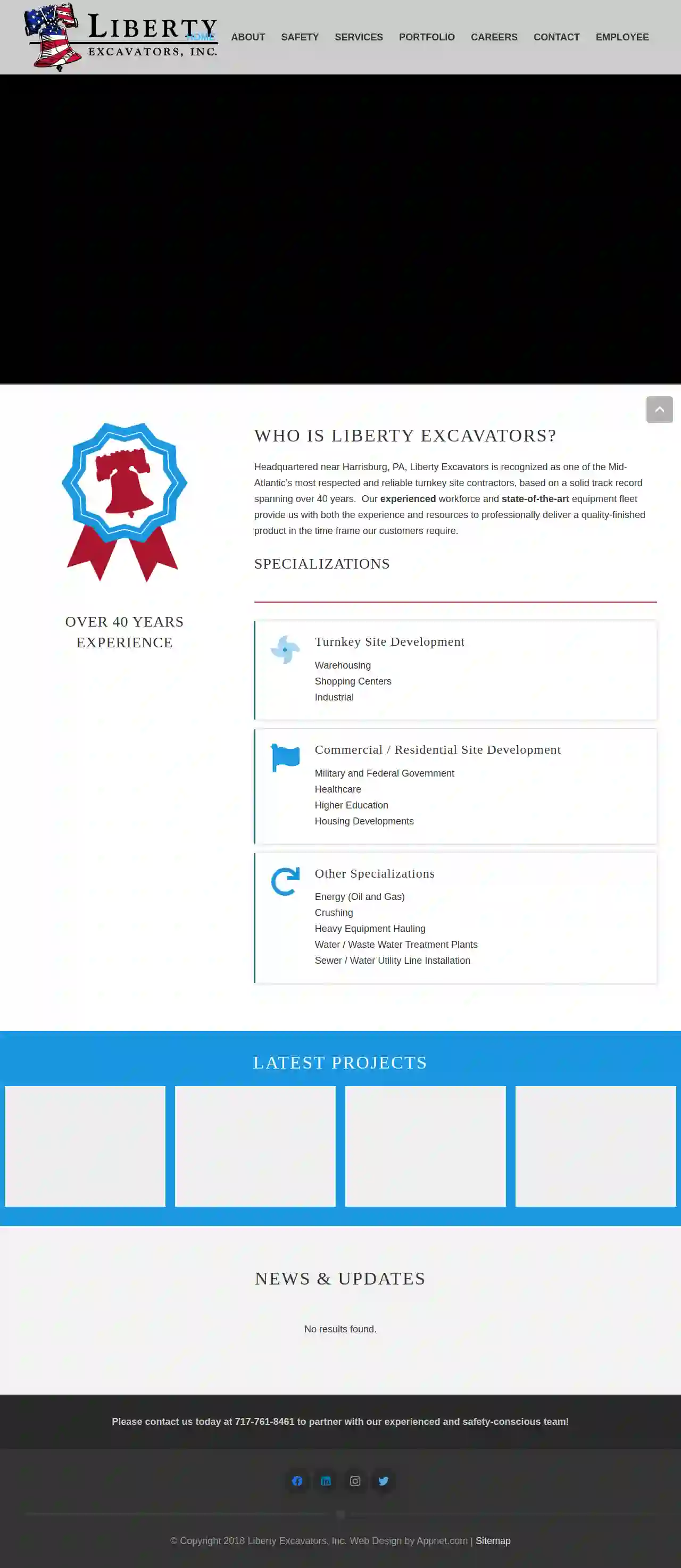
Liberty Excavators Inc
3.123 reviewsHarrisburg, USWho is Liberty Excavators? Headquartered near Harrisburg, PA, Liberty Excavators is recognized as one of the Mid-Atlantic’s most respected and reliable turnkey site contractors, based on a solid track record spanning over 40 years. Our experienced workforce and state-of-the-art equipment fleet provide us with both the experience and resources to professionally deliver a quality-finished product in the time frame our customers require. Specializations Liberty Excavators specializes in a wide range of projects, including: Turnkey Site Development Warehousing Shopping Centers Industrial Commercial / Residential Site Development Military and Federal Government Healthcare Higher Education Housing Developments Energy (Oil and Gas) Crushing Heavy Equipment Hauling Water / Waste Water Treatment Plants Sewer / Water Utility Line Installation
- Services
- Why Us?
- Gallery
Get Quote
Staten Island Masonry- Staten Island Masonry Contractors
518 reviewsYork, USStaten Island Masonry Serving Staten Island and surrounding areas Staten Island Masonry and Concrete is the premier choice for masonry and concrete services in Staten Island. Our team of experienced masonry contractors specialize in a variety of services, including brick laying, block laying, and concrete work. We have been providing superior quality masonry and concrete services to Staten Island and the surrounding areas for over 20 years. We are committed to providing outstanding customer service and craftsmanship on every project. Our team is dedicated to providing the highest quality standard of work and strive to exceed our customers’ expectations. We take the time to understand your project and provide a tailored solution that meets your needs.
- Services
- Why Us?
- Testimonials
- Gallery
Get Quote
Strouse Excavating and Landscaping
56 reviewsHarrisburg, USRF Strouse Landscape Excavate: Your Trusted Partner for Excavation, Landscaping, and Winter Services in Mount Wolf, PA We pride ourselves on providing exceptional services to residential and commercial clients throughout Mount Wolf, PA. With a commitment to quality, safety, and customer satisfaction, we offer a comprehensive range of services to meet all your property maintenance and improvement needs. From expert excavation to stunning landscape design and reliable winter services, we are your go-to solution for transforming and maintaining your outdoor spaces.
- Services
- Why Us?
- Gallery
Get Quote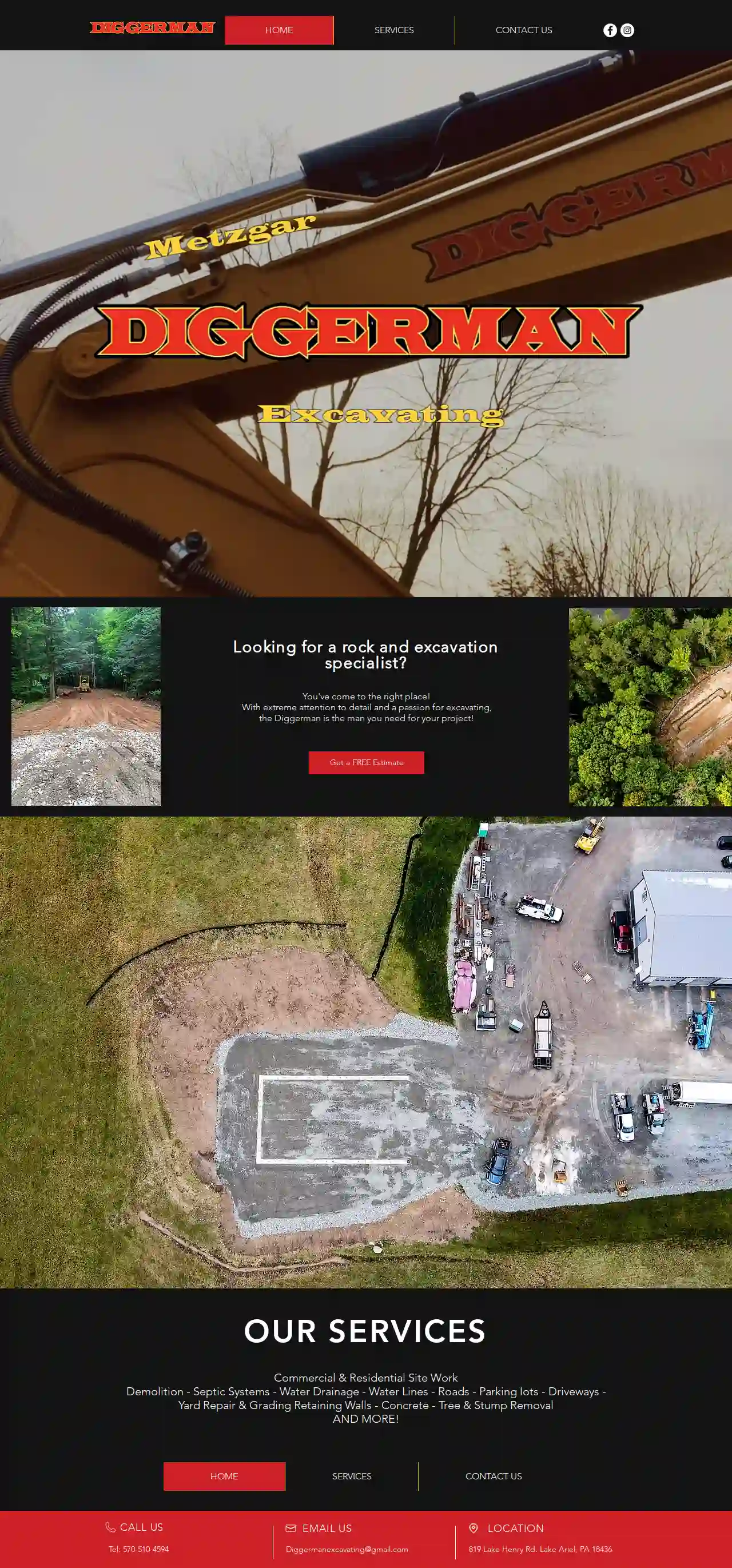
Diggerman Excavating
819 Lake Henry Rd., Lake Ariel, 18436, USLooking for a rock and excavation specialist? You've come to the right place! With extreme attention to detail and a passion for excavating, the Diggerman is the man you need for your project!
- Services
- Why Us?
- Gallery
Get Quote
Brubacher Excavating Inc
4.561 reviews825 Reading Road, P.O. Box 528, Bowmansville, 17507, USAt the heart of our company are hundreds of team members who apply decades of experience to deliver Insight. On Site in service our clients and communities as we live out our mission of Shaping the World We Live In. Their character, commitment, and expertise combined with our integrated services and industry-leading fleet ensure we deliver quality results from start to finish. As an excavating company who proudly serves partners across Pennsylvania, Maryland and Delaware, we provide specialized industry expertise to deliver total client satisfaction. You can count on our team to work safely and efficiently and to get the job done right on time, every time. Our Core Values At Brubacher, we honor our core values as a team in the decisions we make, results we deliver, and experiences we provide. Safety Because Life Matters Integrity Do What Is Right Initiative Make It Happen Teamwork Better Together
- Services
- Why Us?
- Gallery
Get Quote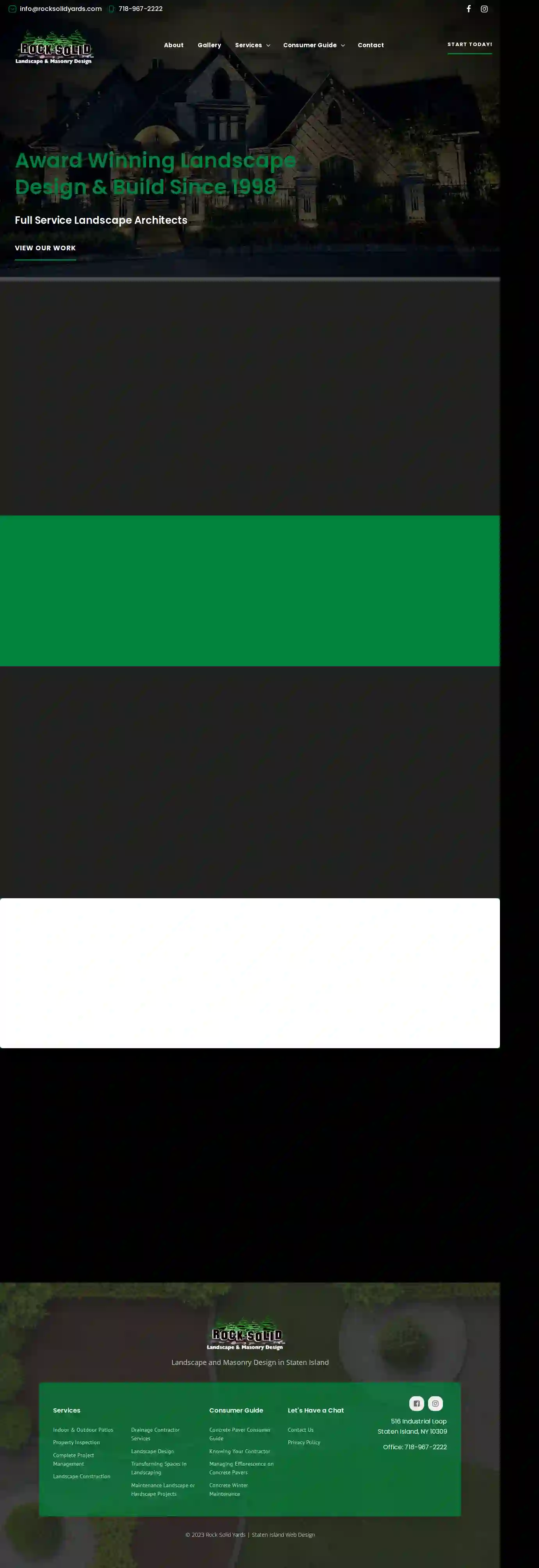
Rock Solid Landscaping and Masonry Design, Inc
3.723 reviews516 Industrial Loop, Staten Island, 10309, USAward winning landscape design & build since 1998 Full Service Landscape Architects Award winning landscape design & build since 1998 Full Service Landscape Architects Award winning landscape design & build since 1998 Full Service Landscape Architects Rock Solid Landscape and Masonry Design Inc specializes in designing and creating your dream home. Being experts in both hardscape and landscape design in Staten Island, we will help build the concept from your vision and ideas, and bring them to life. From start to finish, we work together with each of our clients to ensure that the work that is being done matches the concept that they dreamed up. Let Rock Solid Landscape and Masonry Design Inc create your next landscape masterpiece. Rock Solid Yards is the winner of Two 2010 Staten Island Chamber of Commerce Building Awards for: ROCK SOLID LANDSCAPE AND MASONRY DESIGN INC. more about us Serving the Tri-State area since 1998. MICHAEL IZZO OWNER/MASTER DESIGNER Michael Izzo has over 20 years of Landscape and Masonry Construction experience. He built Rock Solid Landscape and Masonry Design, Inc. from the ground up and he attributes his success to practicing good old fashioned business ethics and promoting a company philosophy of “exceeding customer expectations”. “Customers will return to and promote a business that consistently shows up and delivers exceptional quality projects on schedule and on budget. It’s really that simple.” Trust us for your masonry design and landscaping in Staten Island
- Services
- Why Us?
- Our Team
- Testimonials
- Gallery
Get Quote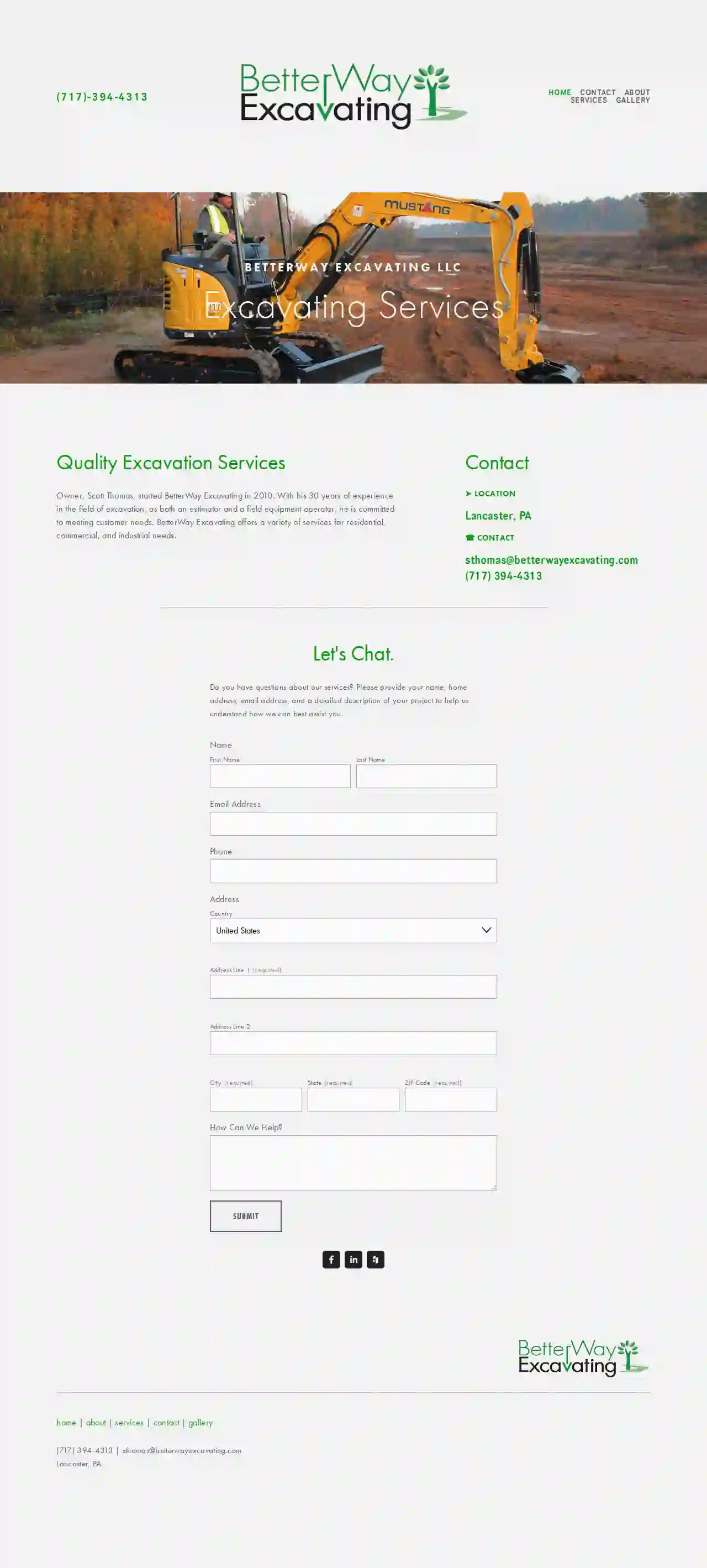
BetterWay Excavating
4.97 reviewsLancaster, USBetterWay Excavating LLC BetterWay Excavating LLC is a family-owned and operated business that has been serving the Lancaster, PA area since 2010. Owner, Scott Thomas, brings over 30 years of experience in the field of excavation, both as an estimator and a field equipment operator. He is committed to providing quality services to his customers and meeting their needs. BetterWay Excavating offers a variety of services for residential, commercial, and industrial needs. We specialize in improving and repairing utilities, site surfaces, and drainage structures of commercial, residential and industrial properties. Our team is dedicated to providing our customers with the highest quality service and workmanship. We are committed to safety and environmental responsibility. We are also committed to providing our customers with a fair and competitive price. We are proud to be a part of the Lancaster community and look forward to serving you.
- Services
- Why Us?
- Our Team
- Gallery
Get Quote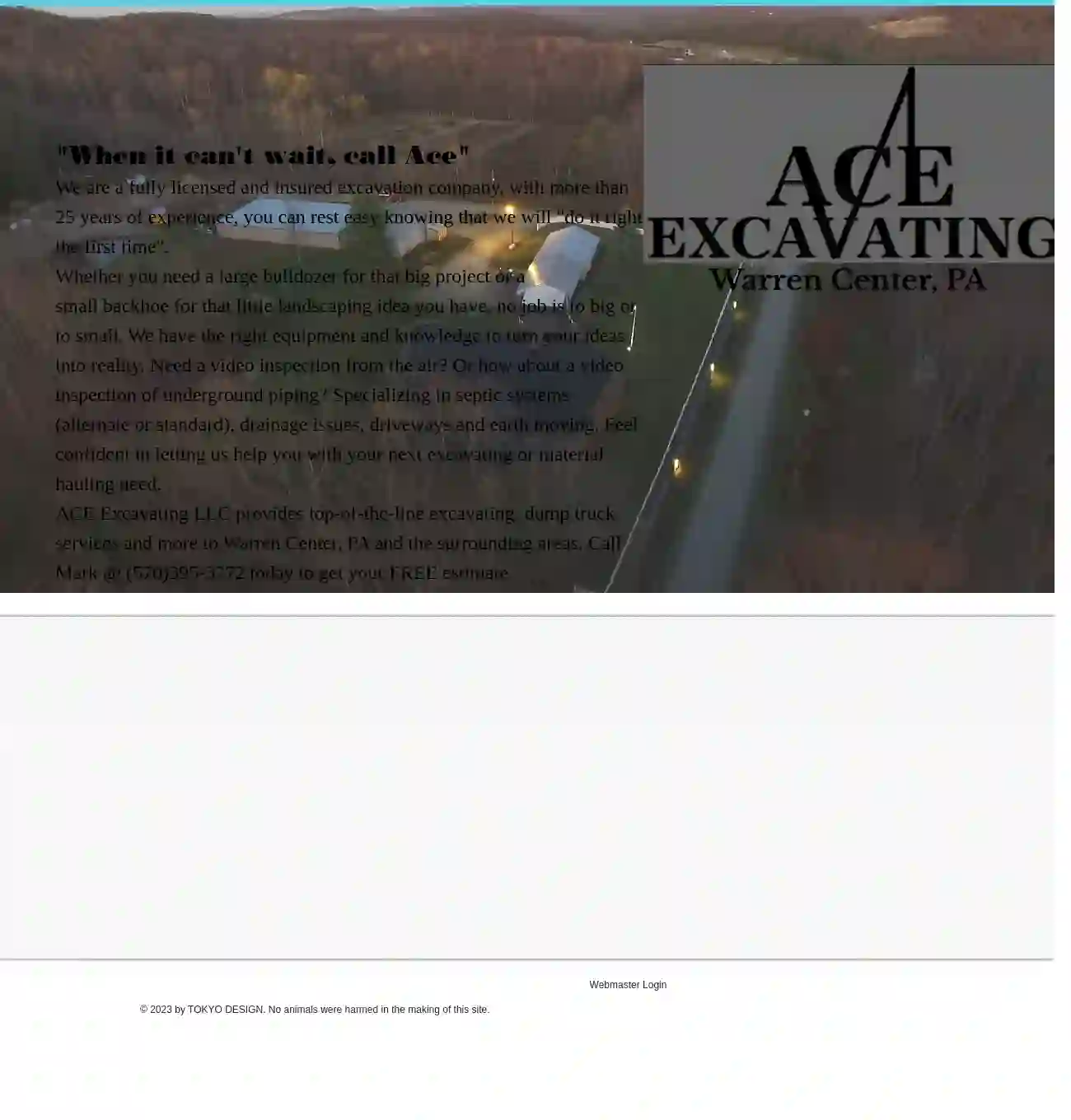
Ace Excavating
52 reviewsWarren Center, USWhen it can't wait, call Ace We are a fully licensed and insured excavation company, with more than 25 years of experience, you can rest easy knowing that we will "do it right the first time". Whether you need a large bulldozer for that big project or a small backhoe for that little landscaping idea you have, no job is to big or to small. We have the right equipment and knowledge to turn your ideas into reality. Need a video inspection from the air? Or how about a video inspection of underground piping? Specializing in septic systems (alternate or standard), drainage issues, driveways and earth moving. Feel confident in letting us help you with your next excavating or material hauling need.
- Services
- Why Us?
- Gallery
Get Quote
Wohlsen Construction
11 reviewsSuite 130, 1200 W. Swedesford Rd., Berwyn, 19312, USWohlsen Construction Company is a premier provider of construction management and general contracting services throughout the Mid-Atlantic and Northeast Regions. With a rich history dating back to 1890, the company has established itself as a leader in the industry, maintaining offices in Pennsylvania, Delaware, Maryland, Virginia, New Jersey, and Connecticut. Our team of experts is dedicated to delivering exceptional results, built on a foundation of safety, expertise, innovation, and IPD/Lean Construction principles. We take pride in our ability to form lasting partnerships with our clients, built on trust, communication, and a shared commitment to excellence.
- Services
- Why Us?
- Accreditations
- Our Team
- Gallery
Get Quote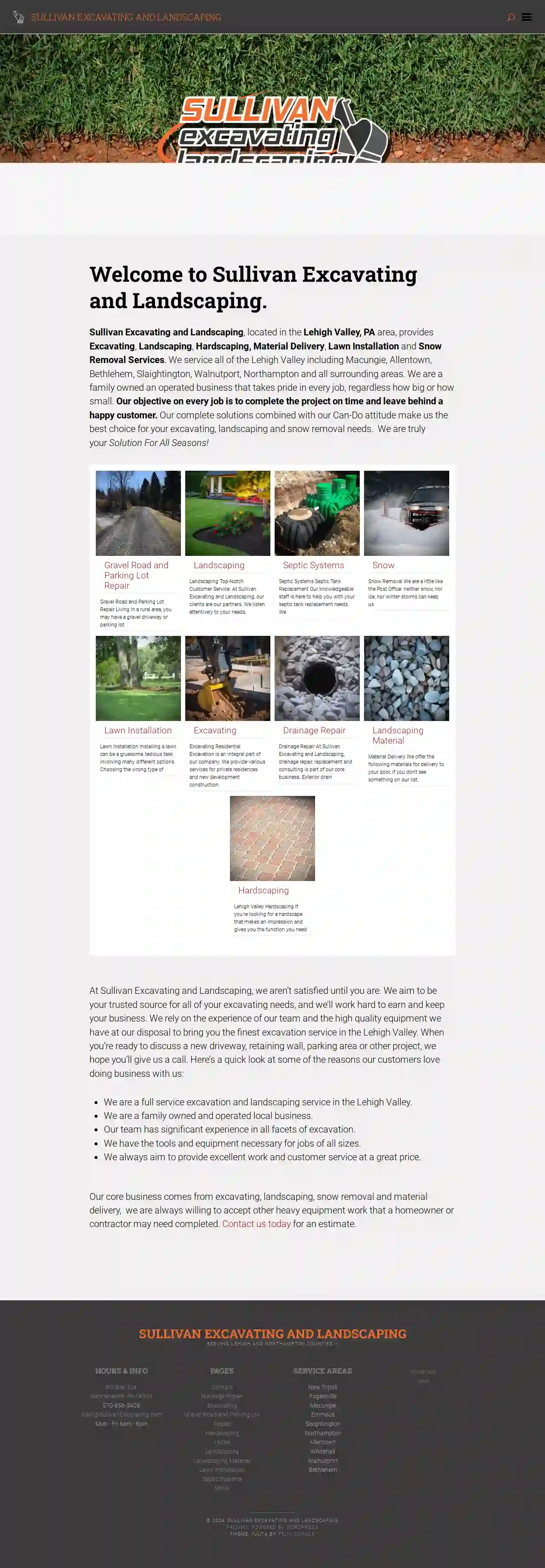
Sullivan Excavating and Landscaping
53 reviewsPO Box 104, Germansville, 18053, USWelcome to Sullivan Excavating and Landscaping. Sullivan Excavating and Landscaping, located in the Lehigh Valley, PA area, provides Excavating, Landscaping, Hardscaping, Material Delivery, Lawn Installation and Snow Removal Services. We service all of the Lehigh Valley including Macungie, Allentown, Bethlehem, Slaightington, Walnutport, Northampton and all surrounding areas. We are a family owned an operated business that takes pride in every job, regardless how big or how small. Our objective on every job is to complete the project on time and leave behind a happy customer. Our complete solutions combined with our Can-Do attitude make us the best choice for your excavating, landscaping and snow removal needs. We are truly your Solution For All Seasons! At Sullivan Excavating and Landscaping, we aren’t satisfied until you are. We aim to be your trusted source for all of your excavating needs, and we’ll work hard to earn and keep your business. We rely on the experience of our team and the high quality equipment we have at our disposal to bring you the finest excavation service in the Lehigh Valley. When you’re ready to discuss a new driveway, retaining wall, parking area or other project, we hope you’ll give us a call. Here’s a quick look at some of the reasons our customers love doing business with us: We are a full service excavation and landscaping service in the Lehigh Valley. We are a family owned and operated local business. Our team has significant experience in all facets of excavation. We have the tools and equipment necessary for jobs of all sizes. We always aim to provide excellent work and customer service at a great price. Our core business comes from excavating, landscaping, snow removal and material delivery, we are always willing to accept other heavy equipment work that a homeowner or contractor may need completed. Contact us today for an estimate.
- Services
- Why Us?
- Gallery
Get Quote
Over 22,076+ Excavation Contractors in our network
Our excavation contractors operate in Haverford & surroundings!
ExcavationHQ has curated and vetted the Best Excavation Contractors in and around Haverford. Find a reliable pro today.
Frequently Asked Questions About Demolition Contractors
- Size and Type of Structure: The method should be suitable for the structure's size, height, and construction materials.
- Site Location and Accessibility: The method should be feasible given the site's location, surrounding buildings, and access constraints.
- Environmental Considerations: Prioritize methods that minimize environmental impact, such as deconstruction or selective demolition if feasible.
- Budget: Different demolition methods have varying costs, so choose one that fits your budget.
- Safety: Prioritize methods that ensure worker safety and minimize risks to surrounding areas.
- Safety: Experienced contractors have the knowledge, skills, and safety training to execute demolitions safely, minimizing risks to workers and surrounding areas.
- Efficiency: Contractors have the specialized equipment and expertise to complete demolitions efficiently, saving time and reducing project costs.
- Compliance: Reputable contractors are familiar with local regulations and permitting requirements, ensuring compliance and avoiding legal issues.
- Waste Management: Contractors have waste management plans to handle debris responsibly, including recycling and proper disposal.
- Liability Protection: Insured contractors protect you from financial responsibility for accidents or damages during the demolition process.
- Project Assessment: The demolition contractor evaluates the structure, site conditions, and project requirements.
- Permitting: Obtain necessary demolition permits from local authorities.
- Site Preparation: Secure the site, disconnect utilities, and remove any valuable or reusable items.
- Hazardous Material Abatement: Professionally remove asbestos, lead paint, or other hazardous materials if present.
- Demolition: Execute the chosen demolition method, bringing down the structure safely and efficiently.
- Debris Removal and Site Cleanup: Sort, process, and dispose of demolition debris responsibly. Clean up the site to prepare it for future use.
How do I choose the right demolition method for my project?
How can I tell if my building contains asbestos?
What are the benefits of hiring a professional demolition contractor?
What are the steps involved in a typical demolition process?
How do I choose the right demolition method for my project?
- Size and Type of Structure: The method should be suitable for the structure's size, height, and construction materials.
- Site Location and Accessibility: The method should be feasible given the site's location, surrounding buildings, and access constraints.
- Environmental Considerations: Prioritize methods that minimize environmental impact, such as deconstruction or selective demolition if feasible.
- Budget: Different demolition methods have varying costs, so choose one that fits your budget.
- Safety: Prioritize methods that ensure worker safety and minimize risks to surrounding areas.
How can I tell if my building contains asbestos?
What are the benefits of hiring a professional demolition contractor?
- Safety: Experienced contractors have the knowledge, skills, and safety training to execute demolitions safely, minimizing risks to workers and surrounding areas.
- Efficiency: Contractors have the specialized equipment and expertise to complete demolitions efficiently, saving time and reducing project costs.
- Compliance: Reputable contractors are familiar with local regulations and permitting requirements, ensuring compliance and avoiding legal issues.
- Waste Management: Contractors have waste management plans to handle debris responsibly, including recycling and proper disposal.
- Liability Protection: Insured contractors protect you from financial responsibility for accidents or damages during the demolition process.
What are the steps involved in a typical demolition process?
- Project Assessment: The demolition contractor evaluates the structure, site conditions, and project requirements.
- Permitting: Obtain necessary demolition permits from local authorities.
- Site Preparation: Secure the site, disconnect utilities, and remove any valuable or reusable items.
- Hazardous Material Abatement: Professionally remove asbestos, lead paint, or other hazardous materials if present.
- Demolition: Execute the chosen demolition method, bringing down the structure safely and efficiently.
- Debris Removal and Site Cleanup: Sort, process, and dispose of demolition debris responsibly. Clean up the site to prepare it for future use.